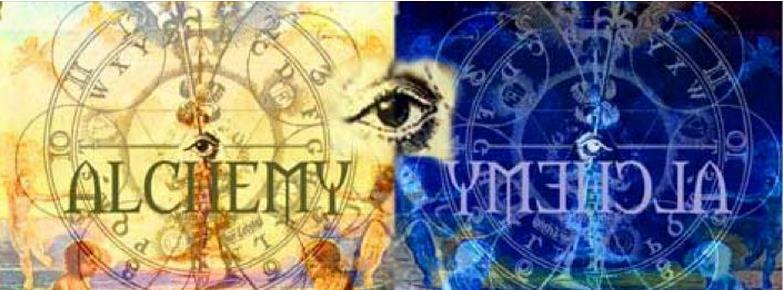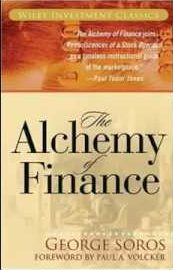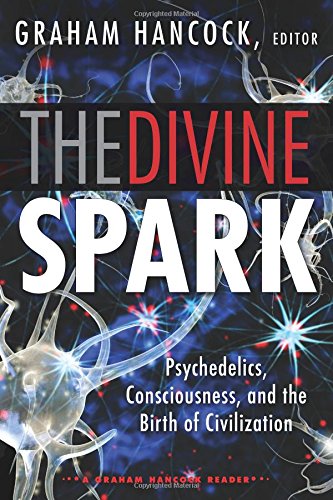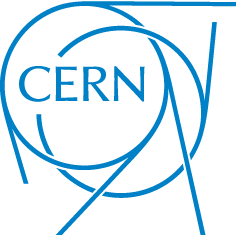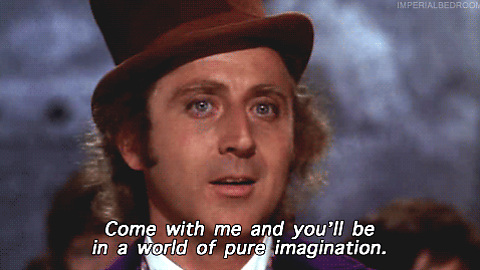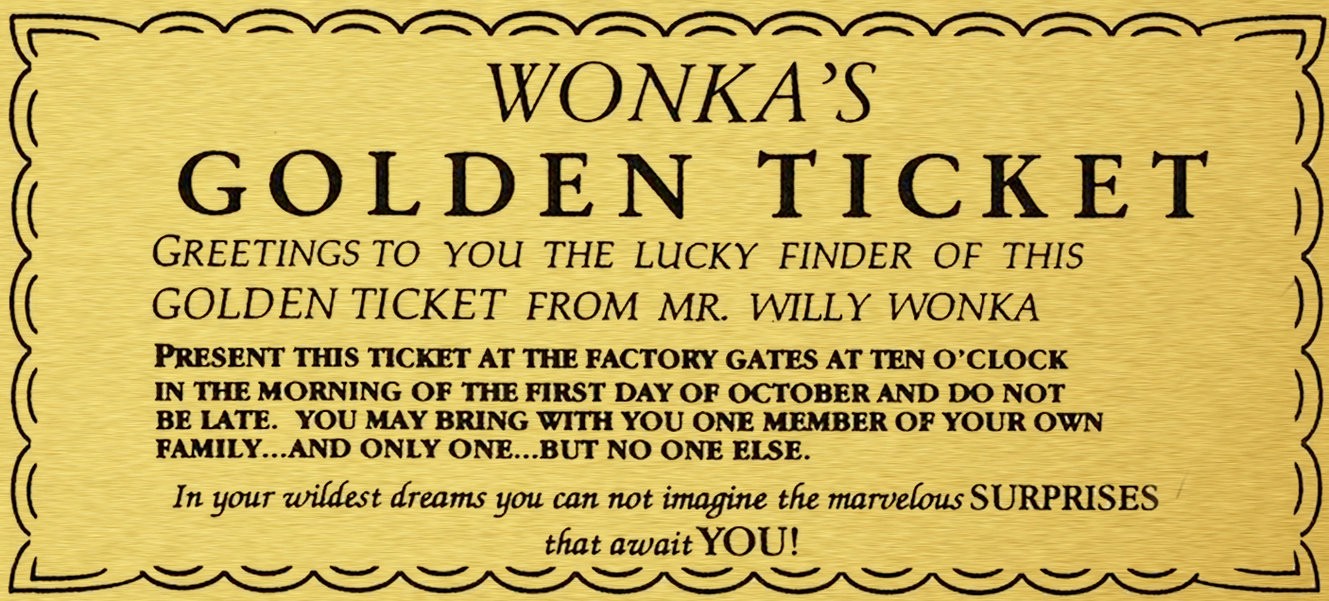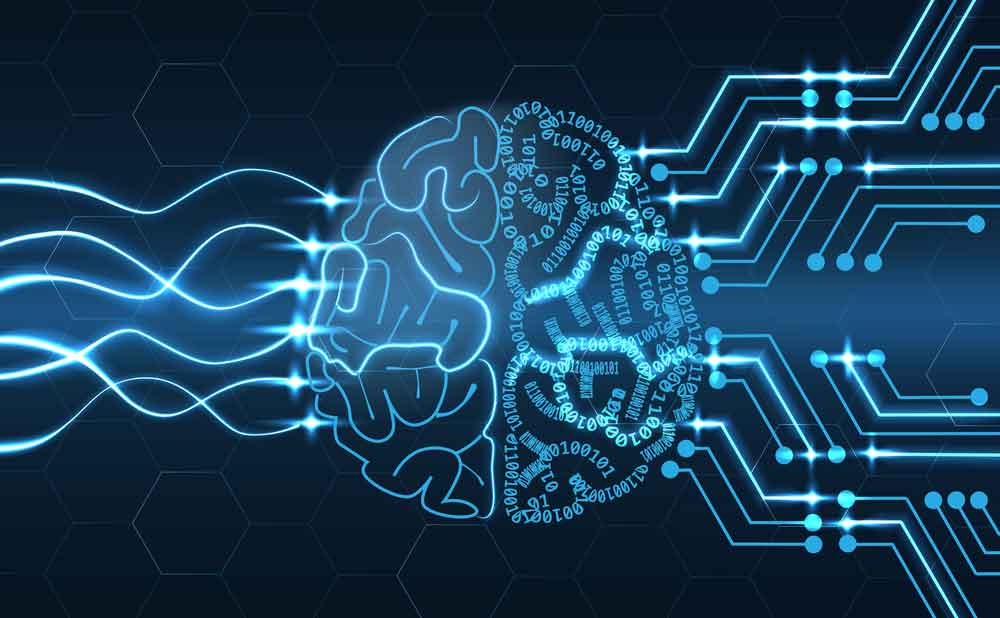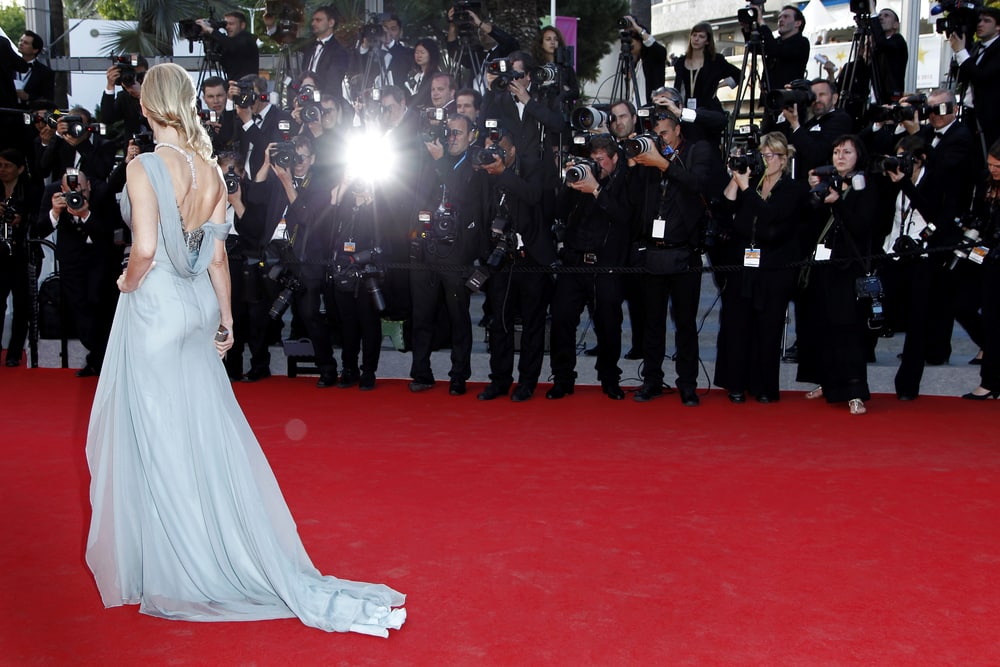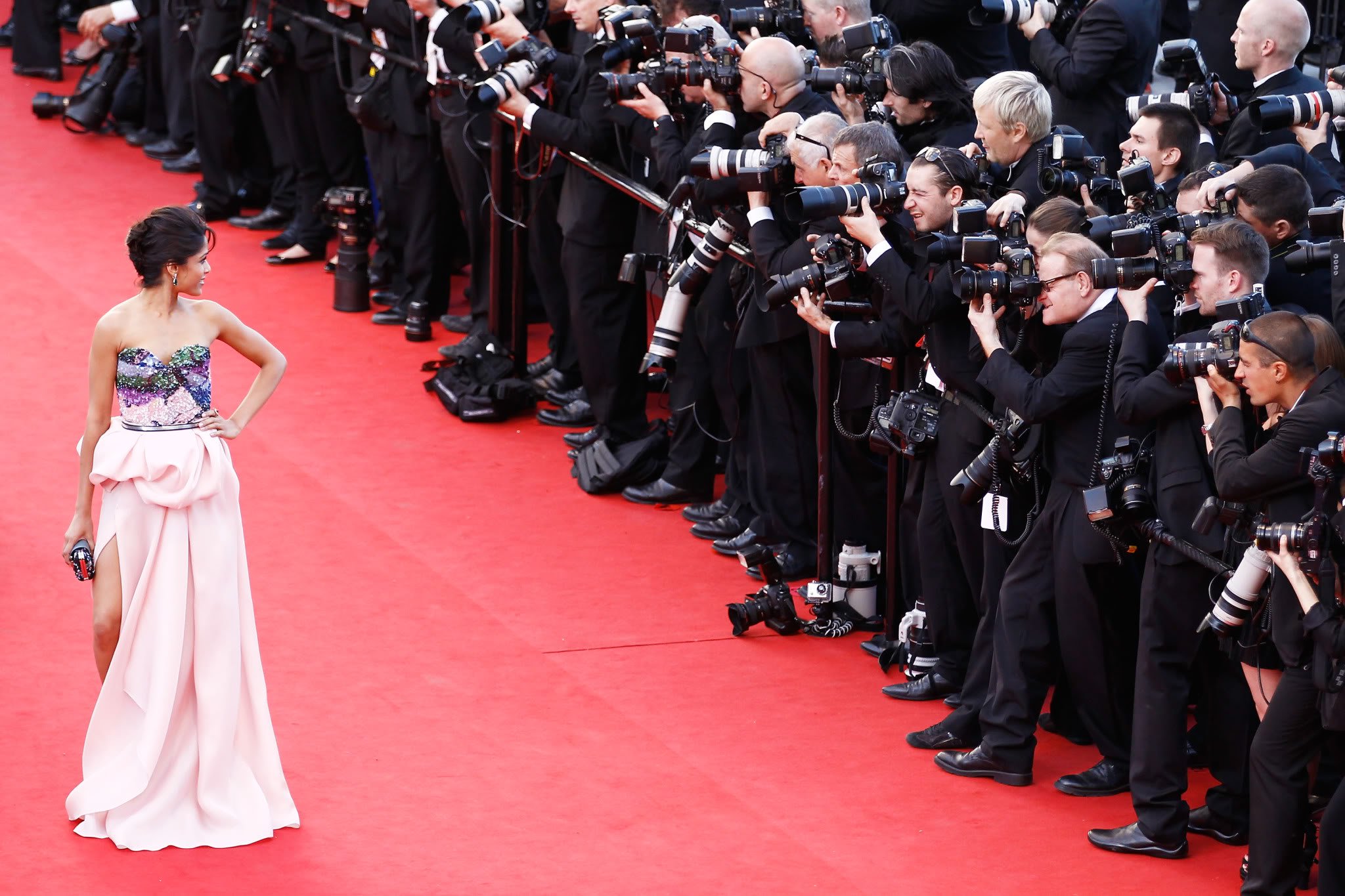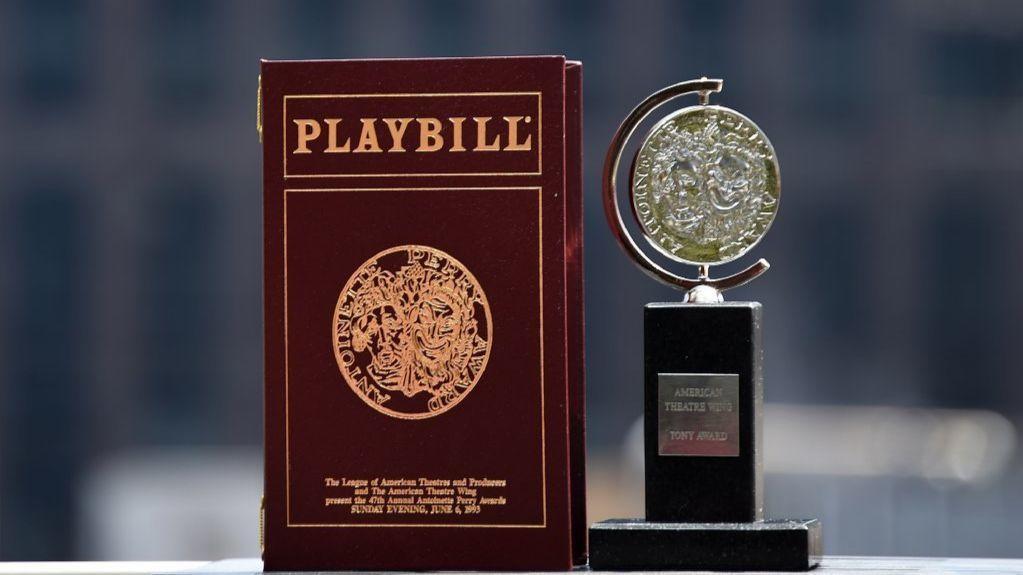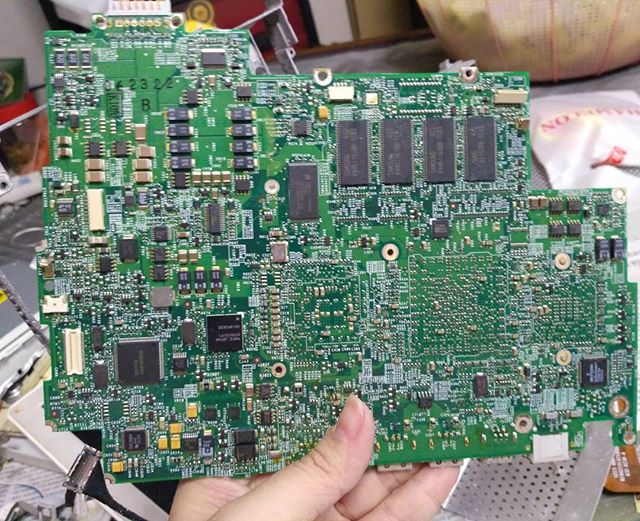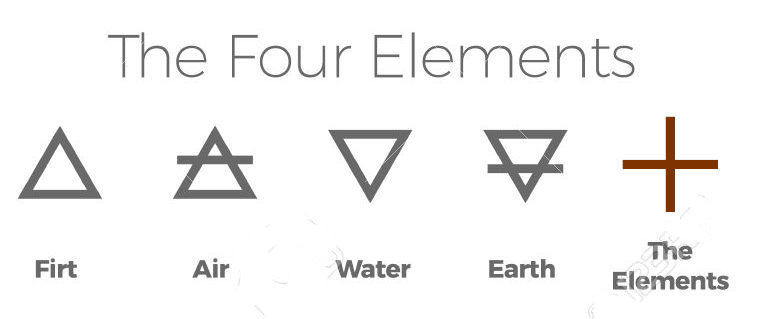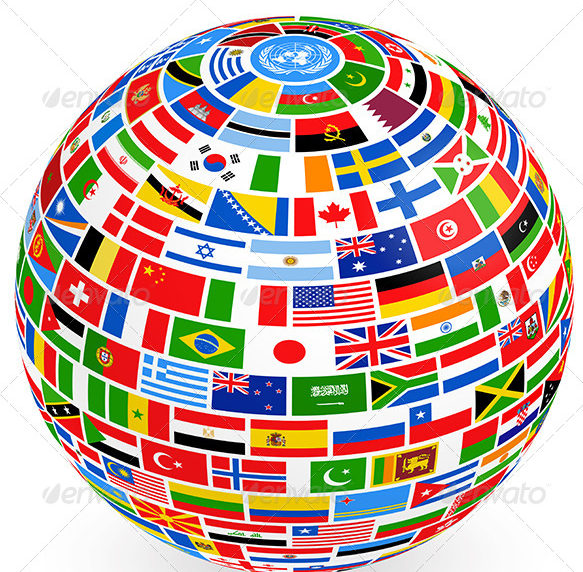Alchemy : The Philosopher’s Stone
Alchemy is divided into two denominations:
Operative
is the science of transmuting lead into gold,
and while this lofty goal was perhaps never achieved by the operatives,their work became the precursor to modern Chemistry.
Speculative
is the science of transmuting our own being
from its rough and imperfect state into its exalted and all-perfect state.
This is a synopsis of the mindset, goal, and hope of a speculative alchemist
Much to his astonishment, C. G. Jung discovered that the ancient art of alchemy was describing, in symbolic language, the journey that all of us must take towards embodying our own intrinsic wholeness, what he called the process of “individuation.”
As Jung wrote,
“I had very soon seen that analytical psychology [the psychology Jung developed] coincided in a most curious way with alchemy. The experiences of the alchemists, were, in a sense, my experiences, and their world was my world. This was, of course, a momentous discovery. I had stumbled upon the historical counterpart of my psychology of the unconscious.”
The alchemists, over the course of centuries, had generated a wide range of symbolic images which directly corresponded to the anatomy of the unconscious which Jung had been mapping through his painstaking work with thousands of patients.
Jung, in illuminating a psychology of the unconscious, can himself be considered a modern-day alchemist.
Jung continues that
“the entire alchemical procedure….could just as well represent the individuation process of a single individual.”
The alchemists had little or nothing to contribute to the field of chemistry, least of all the secret of gold-making. Only our overly one-sided, rational and intellectualized age could miss the point so entirely and see in alchemy nothing but an abortive attempt at chemistry. On the contrary, to the alchemists, chemistry represented a degradation and a “Fall,” because it meant the secularization and commercialization of a sacred science. Jung makes the point, “The alchemical operations were real, only this reality was not physical but psychological. Alchemy represents the projection of a drama both cosmic and spiritual in laboratory terms
The opus magnum [“great work”] had two aims:
rescue of the human soul
salvation of the cosmos
The alchemists were dreaming big. The ancient art of alchemy was chiefly concerned with changing something of seemingly little value into something precious,
of transforming lead into gold, thereby creating the “philosophers’ stone” (the “lapis philosophorum”). The “stone,” or “lapis,” is not a material substance, however, but is an awakened consciousness, which, though seemingly immaterial, pervades, in-forms and gives rise to all creation.
The philosophers’ stone doesn’t just redeem the individual alchemist, it non-locally influences the field to such a degree that it was considered to be able to redeem the entire cosmos. The lapis, as Jung emphasizes, is “a psychological symbol expressing something created by man and yet supra-ordinate to him.”
Alchemy is a timeless, sacred art, as the alchemists’ art is to become an instrument for the incarnating deity to make itself real in time and space.
Alchemy is all about creating wealth.
The alchemical gold and the philosophers’ stone had thousands of names,which was an expression of its all-embracing, numinous and miraculous qualities that cannot be adequately described by language. Regardless of what it is called, the creation of the stone is the goal of the alchemical opus.
Alchemy is a mystical art-form, a genuine spiritual path.
Jung elaborates,
“The mystical side of alchemy, as distinct from its historical aspect, is essentially a psychological problem.
To all appearances, it is a concretization, in projected and symbolic form,of the process of individuation.”
THE PRIMA MATERIA
The “famous secret,” and the basis of the alchemical opus is the unique prima materia, which is the chaos and raw material
out of which the refined substance or “gold” is produced. To the alchemists, there was a spirit hidden in the darkness of the prima materia, a divine spark buried in the darkness of matter.
Speaking about a spirit being hidden in matter, Jung clarifies,
“The psychological equivalent of this theme is the projection of a highly fascinating unconscious content which, like all such contents, exhibits a numinous – ‘divine,’ or ‘sacred’ – quality.”
The much-prized prima materia is the psychic flypaper which catches every imaginable projection buzzing around in the human mind.
Symbolically speaking, the enigmatic prima materia represents the unknown substance within us that carries the projections of the unconscious.
It is the psychic emulsion or medium in which the subconscious contents within us are encoded. The prima materia is thus a symbol for the unconscious itself.
The obscure prima materia re-presents and reflects back to us (through our inner experiences as well as our experiences in the outer world), our underdeveloped, inferior function, our growing edges, the places where we are not consciously related to ourselves. To the extent we are unwittingly identified with our unconscious,
compared to being consciously related to it, is the extent to which we will act out our unconscious, which is the prima materia in action.
Psychologically speaking, we become inflated when, as an ego, we unconsciously identify with the Self (the wholeness of our being, which includes both
conscious and unconscious elements). When we become inflated we act out our unconscious in the world and live beyond our means, beyond the boundaries of who we are as human beings. Not separate from our own mind, the prima materia, like an instantaneous feedback system, will then shape-shift and nonlocally reflect back our state of unconscious “inflation,” so as to keep us in balance. The prima materia in its lead-like aspect contains the spirit of depression, a downward movement into the depths of our being which is felt as melancholia, and which corresponds to the encounter with the shadow in psychology. Just like a dream compensates a one-sidedness, when we are unconsciously inflated, be it personally or collectively, the prima materia constellates a circumstance that will shock and awe us into humility so as to puncture our spell. When we are inflated, the prima materia will “ground” us so as to bring us back down to earth. Hopefully the “crash” won’t be too hard.
The elusive prima materia needs to be found before the opus could begin.
Psychologically speaking, the mysterious prima materia re-presents, and is to be discovered in, the parts of the psyche that we deny, dis-own and marginalize, the aspects of ourselves that we feel ashamed of, revulsion for and turn away from in disgust.
In Jung’s words,
this “means that the thing which we think the least of, that part of ourselves which we repress perhaps the most, or which we despise, is just the part which contains the mystery.”
We typically want to get rid of the shadow aspects of our personality, but the alchemists understood that our wounded, inferior and unconscious parts aren’t an accident or error, but rather, has a value and cosmic perfection to them that is stunning. Our wounds, the base material of the work, are indispensible for the accomplishment of the opus, for without these shadow parts there would be no way to make the alchemical gold.
“And just as, in Christianity, the Godhead conceals itself in the man of low degree,”
Jung writes,
“so in the ‘philosophy’ [alchemy] it hides in the uncomely stone.”
Symbolically, this is the stone “rejected by the builders,” which ultimately becomes the cornerstone.
It is an archetypal, universal idea that the highest value is to be found in the lowest, that the blessing is to be found in the curse, and that the wisdom is to be found in ignorance. It is an archetypal experience that the highest value – what Jung calls the Self, and others call “The Messiah” – unless recognized for its divinity,
is typically contracted against and reacted to with scorn, revulsion, contempt, and disgust.
An ancient alchemical text expresses this idea when it says,
“Christ had no form nor comeliness, was the vilest of all men, full of griefs and sickness, and so despised that men even hid their faces from him, and he was esteemed as nothing.”
It is an archetypal, shamanic idea that we have to descend into the unconscious, making a “nekyia,” a night sea journey, into the depths of our own darkness
so that we can discover “The Pearl of Great Price,” another of the stone’s many names.
The initial stage is the “nigredo,” the blackness of death, the darkness darker than dark, which is actually the seed for the future birth of the living opus.
“The good tidings announced by alchemy [analogous to the “Good News” of the Bible] are that, as once a fountain sprang up in Judea,”
Jung contemplates,
“so now there is a secret Judea the way to which is not easily found, and a hidden spring whose waters seem to be worthless and so bitter that they are deemed of no use at all.”
Jung continues,
“…man’s inner life is the secret place,” where the “medicina catholica or panacea, the spark of the light of nature, are to be found.”
The tantalizing prima materia had a dangerous, toxic aspect, however, and was considered “bedeviled,” causing insanity if not approached with the highest regard.
Though potentially deadly, the prima materia contains within itself its own medicine, which is to say that the alchemical process is its own solution. The prima materia is a quantum phenomenon, in that it is of an indeterminate nature of open-ended potentiality, and contains within itself both the poison and the medicine. The more virulent the poison, the more powerful are its potential healing qualities. Accomplished alchemists are able to transmute the poison into healing nectar, just like when a peacock eats poison, its multi-colored plumage gets even brighter.
The prima materia is a higher-dimensional phenomenon which serves to unite both of the opposites – dark and light – into a higher synthesis.
How the mercurial and shape-shifting prima materia actually manifests depends upon how we dream it.
Jung contemplates,
“Yet nobody has ever known what this primal matter is. The alchemists did not know, and nobody has found out what was really meant by it, because it is a substance in the unconscious which is needed for the incarnation of the god.”
Contemplating an indescribable divine mystery, according to Jung, “the alchemists did not really know what they were writing about,” certainly not with their conceptual mind. Not knowing what they were trying to articulate, the unconscious itself was simultaneously living through the alchemists as it revealed itself to them. This explains the alchemists’ oftentimes confusing, contradictory, and inscrutable description of their art. This lack of consistency and intellectual rigor has led the overly rational and intellectually-minded scientific community to completely dismiss and reject alchemy as being unscientific, irrational nonsense. In their rejection of alchemy, however, modern day scientists are acting out in the world their very rejection of the irrational prima materia within themselves.
In its original form, the paradoxical prima materia contains the most incompatible possible opposites inherent in the human psyche within itself in uncombined form.
An eruption of the unconscious, the prima materia is often symbolized as a dragon, as it is the personification of the instinctual psyche. The prima materia is an “increatum,” an “uncreated,” autonomous, self-generating, spirit-like entity which is the root of itself and rooted in itself and is dependent on nothing.
Jung tells us,
“It is a characteristic of the arcane [esoteric, secret] substance to have ‘everything it needs;’ it is a fully autonomous being, like the dragon [uroboros] that begets,
reproduces, slays and devours itself …a being without beginning or end, and in need of ‘no second.’ Such a thing can by definition only be God himself.”
Speaking of the ineffable prima materia, an alchemical text says,
“Thus the supreme artist [i.e., God] has prepared a great uncreated mystery.” The ungraspable prima materia is considered to be the virginal mother which gives birth to the lapis. The prima materia is also considered to be an orphan because it is so completely unique and utterly one of a kind. It is seemingly hard to find because it is found everywhere. To quote an ancient alchemist, the prima materia is : the Subject of the “Great Stone of the Philosophers, which the whole World has before its eyes yet knows not.”
Jung clarifies this idea when he says,
“The prima materia has the quality of ubiquity, it can be found always and everywhere, which is to say that projection can take place always and everywhere.”
The prima materia is found in the projections of our unconscious, which are located inside of our head and outside in the world at the same time, as the inner and outer are an undivided continuum.
PROJECTION
Jung makes the important point that
“The real nature of matter was unknown to the alchemist. Inasmuch as he tried to explore it he projected the unconscious into the darkness of matter in order to illuminate it. In order to explain the mystery of matter he projected yet another mystery – his own psychic background – into what was to be explained.””
The alchemists’ experiences with matter were revealing to them their own mind.
Jung continues,
“I am, therefore, inclined to suppose that the real root of alchemy is to be sought less in philosophical doctrines than in the projections of individual investigators
…. while working on his chemical experiments the operator had certain psychic experiences which appeared to him as the particular behavior of the chemical process. Since it was a question of projection, he was naturally unconscious of the fact that the experience had nothing to do with matter itself (that is, with matter as we know it today). He experienced his projection as a property of matter, but what he was in reality experiencing was his own unconscious…Such projections repeat themselves whenever man tried to explore an empty darkness and involuntarily fills it with living form.”
To put it simply, the alchemists had unconsciously stumbled onto and were participating in the divine secret which has now become understood in quantum physics (albeit in different terms), that what we are experiencing right now as matter is inseparable from our own mind.
The act of projection is an unconscious, involuntary process, as it is a circuitous route by which to become conscious of ourselves.
Jung comments that
“there must have been something in the unconscious of the alchemists which lent itself to projection (i.e., had a tendency to become conscious because of its energy charge), and on the other hand found in the alchemical operations a ‘hook’ that attracted it, so that it could express itself in some way.”
Something in the alchemists’ minds wanted to make itself known and become conscious, and it projected itself into matter to do so.
The Self, the intrinsic wholeness of the human psyche, wanted to actualize itself, so it created the art of alchemy as a medium for and symbolic expression of its realization. An unconscious, split-off, and autonomous content leads a life of its own in the subterranean levels of the psyche, and, in Jung’s words, is prone to
“instantly projecting itself whenever it is constellated in any way – that is, whenever attracted by something analogous to it in the outside world.
A sheen of our unconscious projections overlays the seemingly externalized world, acting as both a filter through which and a mirror in which we see ourselves.
“So, although the alchemists failed to discover the hidden structure of matter,” Jung appreciates that “they did discover that of the psyche, even if they were scarcely conscious of what this discovery meant.”
It took Jung’s unique genius to appreciate and be able to bring to light the real hidden value, meaning and profundity of what the alchemists’ had discovered.
“But the principle of the unconscious,” Jung explains, “is the autonomy of the psyche itself, reflecting in the play of its images not the world but itself, even though it utilizes the illustrative possibilities offered by the sensible world in order to make its images clear.”
The sensory datum of this world are autonomously selected, exploited, and configured by the psyche, so as to give shape and form to itself and thereby reveal its own underlying structure. In other words, the unconscious is revealing itself through its very projections onto the world, which is to say that the unconscious is synchronistically revealing itself through our experience of life itself. The unconscious is its own self-revelation. All we need to do is to recognize what is being revealed.
So many people become entranced by their perceptions, convinced that how they are seeing things is objectively true.
“Practical experience shows us again and again,” Jung elaborates, “that any prolonged preoccupation with an unknown object acts as an almost irresistible bait for the unconscious to project itself into the unknown nature of the object and to accept the resultant perception, and the interpretation deduced from it, as objective.”
To the extent we are asleep, we are reacting to our own projections as if they objectively exist in concretized form outside of ourselves. Alchemy is an inspired,
visionary art form that works with the projective tendencies of our mind in order to help us dis-spell, consciously see through and liberate our projections. The art of alchemy is like a psycho-spiritual multi-vitamin and mineral elixir secreted by the cosmic mind to help heal the collective madness
that has infected our world.
SATURN
Alchemy is an expression of the fact that light is hidden in darkness, that the deepest blessings are found in the distressing dark shadows of the human psyche.
Jung amplifies the darkness when he writes,
“The prima materia is ‘saturnine,’ and the malefic Saturn is the abode of the devil, or again it is the most despised and rejected thing, ‘thrown out into the street,’
‘cast on the dung-hill,’ ‘found in filth.’”
The alchemists were having a deepening experience of God which included both light and dark, good and evil, an experience which was a projection of a deep process of integration that the alchemists must have been going through within themselves.
Jung points out that,
“…in alchemy an attempt was made at a symbolical integration of evil by locating the divine drama of redemption in man himself.”
This involved a process of coming to terms with the unconscious, which always becomes a necessity when we are confronted with its darkness. This confrontation forced itself on the alchemists as soon as they made a serious effort to find the prima materia. The prima materia was a genuine numinosum, a holy, psychic/spiritual substance which allowed the alchemists to consciously experience both the light and dark sides of God within themselves.
As Jung puts it,
“the individual is confronted with the abysmal contradictions of human nature, and this confrontation in turn leads to the possibility of a direct experience of light and darkness, of Christ and the devil.”
In the prima materia, the alchemists were literally dreaming up a “Holy Grail-like” receptacle to hold, embrace, reflect, embody, integrate and potentially liberate
all of their vast range of often contradictory projections. This sacred substance included and united their image of God and the Devil, thereby helping them come to a fuller understanding of the vastness of the Self, the totality of our being, which includes both light and dark.
Symbolically speaking, the prima materia corresponds to lead, which relates to Saturn-Chronos, the negative father. One of the prima materia’s many symbols is a weak and infirm old man, the mythic dying king, or “senex,” who has lost touch with feeling, with eros, with relatedness, with creativity, with compassion, and with love.
This figure of the rigid-old-man-negative-father is symbolic of a calcification of consciousness which, out of fear of its own weakness, holds onto and becomes addicted to power and control. The dying old man represents a dominant position in consciousness which has outlived its usefulness, and thus becomes an obstacle to the growth and development of consciousness. This archetypal figure is in need of being liquefied and de-solidified, of being given an alchemical bath in the healing waters of the psyche.
There is an alchemical saying “solve et coagula,”
dissolve and coagulate (which correspond to the alchemical operations
“solutio” and “coagulatio”).
The Goat of Mendes or BAPHOMET is a Goat Headed deity, being formed of both male and female principles, with a Caduceus of Mercury in oplace of its Phallus. One arm points up and one down , with the Latin ‘ Solve et Coagula‘ written on them.
The alchemists were dissolving and regenerating elements of their experience and their identity both over time, as well as in each and every moment, so as to potentially distill, re-constitute and create something new within themselves. De-solidifying, de-literalizing and de-constructing their experience in each moment empowered the alchemists to actively participate in their own transformation and evolution. The alchemists saw the essence of their art as both analytic and synthetic, as it involved separation, discrimination and analysis on the one hand, and synthesis, consolidation and integration on the other.
Saturn, the corrupted patriarchy, mythologically speaking, is the governor of the prison, the one who binds us and seemingly limits our freedom, while simultaneously being the supreme tester and great purifier.
Paradox is the language of alchemy, as it is an expression of the unified point of view in which the seeming opposites are not so opposed to each other after all.
The archetype of the dark father has to do with domination and force over others, as compared to being in relation. The archetypal, negative patriarchy has to do with the suppression of the feminine, of feeling, of spontaneity, of life itself. The negative patriarchy, synchronistically, just so happens to be the deeper archetypal process which is animating events in our world today. Alchemy is a collective dream of our ancestors which also happens to be profoundly relevant for our world today. The archetype of the negative father is initiatory, which is to say it is revealing something to us which is most important for us to know. Seen as a compensatory dreaming process, the figure of the negative father, with its willful lust for, and abuse of power, is challenging us to connect with our intrinsic, God-given power.
Our true power is a power infused with the spirit of eros, with relatedness, feeling and relationship, with love and connection, all of which are elements in the magic elixir which transmutes the poisonous aspect of the draconian figure of the negative father. To be under the spell of Saturn-Chronos, the dark father, “Father Time,” is to be entranced and absorbed in linear time at the expense of the timeless dimension of our being. To recognize that we are playing out on the world stage the mythic process of the negative patriarchy is to have an expansion of consciousness in which we step into a mythical dimension where time is not “chrono-logical.” When we snap out of the spell and logic of linear time, we wake up to “dreamtime,” where time is experienced as a radial-matrix whose center is here and now. Dreamtime is not linear but circular, not fixed but fluid, not mechanistic but natural, not historical but a-historical. Dissolving the figure of father time, of living by the clock, we become introduced to the “syn-chronic” order.
The synchronic order, whose timing frequency is a universal factor of synchronization, is a realm of infinite interconnectedness and inter-resonance between everything and everything else. In the synchronic realm the microcosm and macrocosm are synchronistic, mirrored reflections of each other, different iterations of the same underlying, harmonic fractal. This inter-nested fractal reflects a singular nowness eternally unfolding in endlessly diverse and novel patterns.
To the alchemists, creating the philosophers’ stone was analogous to waking up to the dreamlike nature of the universe. Becoming lucid in the waking dream
is seen as a reflection of God’s ongoing creation of and incarnation into the world. Just like every little piece of a hologram contains the whole hologram,
each individual is a reflection of the whole.
Jung wrote,
“For the alchemists the process of individuation represented by the opus was an analogy of the creation of the world, and the opus itself an analogy of God’s work of creation. Man was seen as a microcosm, a complete equivalent of the world in miniature.”
Recognizing the co-respondence between the microcosm and the macrocosm, between the inner and outer is the birth of “symbolic awareness,” which is to recognize that this universe is not speaking literally but, like a dream, is speaking to us symbolically.
This is the meaning of the famous alchemical maxim, “As above, so below.”
What is happening in the world is a symbolic reflection of what is happening inside of ourselves.
A true hermetic art, alchemy requires a hermeneutics (a methodology of interpretation) of symbols.
This is a mode of apprehension which takes place in the faculty and under the tutelage of the creative imagination, in which sensory data are transmuted into living symbols, allowing the universe to fulfill its revelatory and theophanic (God revealing) function. Symbolic awareness is the very expansion of consciousness which nonlocally dissolves the rigid and fixed archetypal figure of Saturn-Chronos, the negative father, throughout the whole field, like pouring water on the wicked witch of the west, only in this case the whole world becomes “fluid,” and thus ripe with new possibilities.
A genuine transformation mystery, alchemy is about transforming the negative patriarchy, the dark side of God, the wrath of God, into a loving God. In this way, alchemy is simply a further iteration of the Christ event, of an old testament turning into a newer one, a genuine “second coming,” only this time the “Incarnation” is happening within and through the unconscious of all of humanity.
Alchemy, as Jung explains,
“…involves a mystery consummated in and through man. It is as though the drama of Christ’s life were, from now on, located in man as its living carrier. As a result of this shift, the events formulated in dogma are brought within range of psychological experience and become recognizable in the process of individuation.”
Drafted into being instruments of the Incarnating deity, we find ourselves as a species genuinely imitating Christ to an ever increasing degree.
The alchemists’ goal, however, was, as Jung points out,
“…to realize the idea ‘Christ’ on a plane far transcending a mere imitation of him.”
The alchemists imitation of Christ, to quote Jung, wasn’t
“…an intentional straining after imitation, but rather, an involuntary experience of the reality represented by the sacred legend. This reality comes upon him in his work… The Passion happens to the adept, not in its classic form… but in the form expressed by the alchemical myth. It is the arcane substance that suffers
those physical and mental tortures; it is the king who dies or is killed, is dead and buried and on the third day rises again. And it is not the adept who suffers all this, rather it suffers in him, it is tortured, it passes through death and rises again. All this happens not to the alchemist himself but to the ‘true man,’ who he feels is near him and in him and at the same time in the retort… it is the real experience of a man who has got involved in the compensatory contents of the unconscious by investigating the unknown, seriously and to the point of self-sacrifice.”
It is the arcane substance, the “true man,” i.e., the Self, which is undergoing transformation and incarnation within the individual alchemist. By alchemically containing this experience, the alchemists became their own retort, their own hermetically-sealed vessel. Participating in the transformation of the deity, the alchemists developed a relationship with, became assimilated into, and thereby a channel for, the incarnation of the emerging Self.
Jung continues,
“the opus Christi is transferred to the individual. He then becomes the bearer of the mystery, and this development was unconsciously prefigured and anticipated in alchemy.”
Alchemy is like a precognitive dream of the psyche itself, reflecting and revealing the divine incarnation process into which the human ego has found itself drafted.
THE LAPIS-CHRIST CONNECTION
The idea of the philosophers’ stone crystallizing into and out of the creative imagination of the alchemists is analogous to the Incarnation of Christ into our third-dimensional world.
As Jung contemplates,
“…a real experience of the opus had an increasing tendency to assimilate the dogma or to amplify itself with it. That is why the text says that Christ
was ‘compared and united’ with the stone.”
The function that Christ played in Christianity had found, in the philosophers’ stone, a new domain and format in which to operate. It was as if the philosophers’ stone and Christ were inseparable differentiations of each other, which when fully differentiated, revealed their inseparability.
The Christian point of view is that
we are in need of redemption and leaves the work of redemption to an autonomous divine figure.
The alchemists, on the other hand, were having the epochal, revolutionary, and evolutionary realization that we are all collaboratively playing a crucial, participatory role in the Incarnation of the divine being.
Both points of view are true, as they are complementary and unifying aspects of a greater whole.
From the alchemical perspective, as Jung clarifies,
“…man takes upon himself the duty of carrying out the redeeming opus, and attributes the state of suffering and consequent need of redemption to the anima mundi [world soul] imprisoned in matter.”
Alchemically speaking, it is the arcane substance, the true man, the Self, which suffers, is tortured, transformed and rises again. This realization can help us re-contextualize and reframe our experience of suffering. Instead of personally identifying with our suffering in a way that is limiting, problematic and reinforces it, we can recognize that the origin of our suffering is transpersonal and archetypal. “Who is it inside ourselves who is actually suffering?” becomes a relevant question, as we begin to recognize that we, not as ego but as Self, are participating in a divinely-sponsored passion play. Through our suffering we can recognize that we are not isolated entities separated in our suffering from the rest of the universe, but rather, are playing roles in a divine incarnation process which is not a product of our ego, but is a manifestation of the Self. We are going through a symbolic crucifixion experience, sharing in the suffering of Christ so as to share in his glory.
Our suffering is our “share” of helping to free the anima mundi, the imprisoned world soul.
This realization instantaneously enlarges our perspective, snaps us out of the self-generating, narcissistic trance of the separate self, and connects us with each other, as we are all in the same boat, all on the same side. The expression of this realization is compassion.
The alchemists were saved not so much by their own work, but by their participation in the birth of the savior within themselves.
“For the alchemist,” as Jung emphasizes, “the one primarily in need of redemption is not man, but the deity who is lost and sleeping in matter.Only as a secondary consideration does he hope that some benefit may accrue to himself from the transformed substance as the panacea, the medicina catholica… His attention is not directed to his own salvation through God’s grace, but to the liberation of God from the darkness of matter. By applying himself to this miraculous work he benefits from its salutary effect, but only incidentally.”
In venerating the highest value, the alchemists are serving something beyond their limited ego, which is a state of pure potential and grace. The alchemical art is truly divinely inspired and blessed. Says an alchemist, “The art has no enemies, except the ignorant.”Instead of coming down from the heavens, the alchemical deity came up from below, from base matter, from the earth, from the “underworld” itself.
The alchemists’ “aspiration” had to do with, according to Jung,
“the transformation of the god brought about through man, man being the retort in which the god is transformed, where he descends into uttermost matter and where the spirit develops out of matter.”
In the act of becoming lost in matter, God, with our help, is born out of and into humanity.
Paradoxically, humanity is a living, breathing alchemical vessel in which spirit as seemingly become trapped, while simultaneously being the very instrument through
which spirit becomes materialized in time so as to be liberated. Spiritually speaking, freeing the spirit which is imprisoned in matter is to not identify with our thoughts,
but to simply recognize their insubstantial, dreamlike nature and allow them to effortlessly transform, dissolve and spontaneously self-liberate of their own accord. A
thought-form is like a whole, self-contained universe.
When we identify with a thought-form’s contents and point of view, we become absorbed in and incarnate that particular dreamlike universe in a way that limits our creative freedom. Our creative spirit has then seemingly become trapped in matter; as we’ve unwittingly used our creative power against ourselves in a way that binds us.
Recognizing the illusory and yet, reality-creating power of our thoughts allows us to create with our thoughts, instead of being created by them. Recognizing that we never experience this moment except through the creative imagination empowers us to alchemically transform our experience of ourselves, and, by nonlocal extension, the whole universe.
Psychologically speaking, God hidden in matter symbolically re-presents the Self hidden in unconscious identification with the ego.
This unconscious ego-Self identity, where there’s not a conscious relationship between the ego and the Self but an unconscious, compulsive acting out by the ego,
contaminates the potential union of opposites, seemingly obstructing the whole point of the work. This contamination, however, is none other than the prima materia itself, without which we couldn’t make the gold. The prima materia is a living paradox in the flesh…our flesh.
Jung reflects,
“It was clear to the more astute alchemists that the prima materia of the art was man himself.”
To the alchemists, the philosophers’ stone, their son of God, was not begotten in the womb of the Virgin Mary, but in the womb of Mother Nature.
Jung reminds us that
“Nature is not matter only, she is also spirit.”
In one sense, the opus is a work against nature, an “opus contra naturam,” a work against nature which nature itself desires. The prima materia is an “imperfect body” in need of being perfected. The alchemists are helping nature do what she cannot do herself.
An alchemical maxim states, “What nature left imperfect, the art perfects.”
Although the impulse to consciousness exists in nature – within the unconscious of humanity – an ego is needed as a transformative vessel to realize and perfect this natural urge. Self-reflection, an act in which we recognize ourselves in the mirror of life, is a bending of consciousness back upon itself, and is hence, a work against nature. In the moment of self-reflection, the psycho-spiritual necessity for evolutionary growth over-rules the biological compulsion of unreflective animal instinct.
Though an ego is needed for its actualization, reflective awareness occurs not by the will of the ego, but by the promptings to individuation originating from the Self (which is equivalent to the philosophers’ stone). Our very impulse to be reflective, as well as our impulse to resist reflection, for that matter, are both expressions of the philosophers’ stone. In alchemy, we have to start with the philosophers’ stone in order to make the philosophers’ stone.
In a mutual opus, the ego and the Self reciprocally, and collaboratively redeem each other – The ego needs the guidance and support of the Self, while the latent Self needs the co-operation and participation of the ego in order to incarnate in embodied form. The ego is the child of the timeless Self, as the Self is the source of the ego’s being. At the same time, the realized Self can only be born in time and space through an ego.
This is why Christ, who symbolizes the Self, in addition to being called the “Son of God,” is also referred to as the “Son of Man.” The formless Self emerges in embodied, incarnate form as a result of an encounter with a conscious human ego; the Self is therefore called the son of man, or the child of the philosophers. The alchemists’ art allows God to know Itself by creating Itself through the individual alchemist.
To quote an ancient alchemical text, the “Stone can only be brought to its proper form by Art.”
Through their sacred art, the alchemists’, in discovering the philosophers’ stone, were literally creating consciousness. Individuation is Incarnation. The alchemists were having an archetypal imagination that it was God Itself that had become imprisoned in matter, absorbed in the dream, entranced by the dogma of literalism, bewitched by Its own genius for reality creation, and needed the help of the alchemists to become liberated. And the alchemists, to the extent that they didn’t realize that what was the matter with matter was their own imagination, became similarly bewitched.
As Jung tells us, the alchemists had to come to terms with the fact that they
“were chasing a projection, and that the more they attributed to the substance the further away they were getting from the psychological source of their expectations.”
If the alchemists didn’t realize they were chasing a projection, it eluded them like an ever-receding rainbow, as they tried to grasp the ungraspable. Jung concludes that “the alchemists came to project even the highest value – God – into matter.”
When we are unconscious of something, we always project it outside of ourselves, where it gets “dreamed up” into materialization.
Jung clarifies this important point when he says,
“…everything unconscious, once it was activated, was projected into matter – that is to say, it approached people from outside.”
Jung continues,
“It is therefore not surprising if the unconscious appears in projected and symbolized form, as there is no other way by which it might be perceived.”
Inasmuch as a projected content is only apparently severed from the wholeness of the psyche by the act of projection, the conscious mind is secretly tied to its projections by a fascination, attraction, and unconscious identification. Projection affects the recipient of the projection, in this case the mysterious stone, influencing the recipient, who “carries” the projected content, to embody the projection even more, which serves as evidence to further solidify the projection, which then literally becomes “written in stone.” When we are projecting our images of God, how our projection turns out – in delusion or realization – depends upon if we recognize what is being revealed about ourselves through our projection. To the extent that the alchemists realized they were projecting outside of themselves their own divinity so as to recognize it within themselves, was the extent to which the alchemists were unlocking the key to their own self-empowerment.
If an alchemist realized the reflective and revelatory nature of what he was experiencing in his miraculous lapis, which he himself equated with Christ, to quote Jung, he would
“have been obliged to recognize that he had taken the place of Christ – or, to be more exact, that he, regarded not as ego but as self, had taken over the work of redeeming not man, but God. “He would then have had to recognize not only himself as the equivalent of Christ, but Christ as a symbol of the self.”
Compared to Christ, who, as the Word made flesh, was the full-bodied incarnation of the Light, each one of us are instruments for the reunion and re-uniting of the paradoxical God which contains both light and dark. We are the alchemical vessels prepared by God expressly for the purpose of uniting the opposites intrinsic to Its nature.
Jung reflects that,
“Whereas in Christ God himself became man, the filius philosophorum [the son of the philosophers, i.e., the stone, analogous to the son of man] was extracted from matter by human art and, by means of the opus, made into a new light-bringer [interestingly, the archetypal “light-bringer” is Lucifer]. In the former case the miracle of man’s salvation is accomplished by God; in the latter, the salvation or transfiguration of the universe is brought about by the mind of man – ‘Deo concedente’ [God willing], as the authors never fail to add… Man takes the place of the Creator”
The sacred, meta-physical art of the alchemists was to liberate the creative spirit of the cosmos, which they could only accomplish with the blessing of the creative spirit which is God. Creative artists of and for the soul, the alchemists were being a channel for the universe to autopoetically re-create itself in a uniquely evolutionary way.
In Jung’s words,
“…man is indispensible for the completion of creation; that, in fact, he himself is the second creator of the world.”
In exploring their unconscious through the material world, the alchemists were potentially waking themselves up to the dreamlike nature of reality. In becoming lucid in the dream of life, they were realizing how they could transform the world by transforming themselves. We are all potential alchemists-in-training to the extent we are consciously participating in giving creative expression to our experience of the unconscious. When enough of us become accomplished in the sacred art of alchemy, we can connect and “conspire to co-inspire” each other, I imagine, to activate our collective genius and create real magic, changing the world in the process. As the alchemist Gerhard Dorn proclaims, “Transform yourselves into living philosophical stones!”
THE END OF THE SACRED ART OF ALCHEMY
The Christian point of view is that
we are in need of redemption and leaves the work of redemption to an autonomous divine figure.
The alchemists, on the other hand, were having the epochal, revolutionary, and evolutionary realization that we are all collaboratively playing a crucial, participatory role in the Incarnation of the divine being.
Compared to Christ, who, as the Word made flesh, was the full-bodied incarnation of the Light, whose Holy Spirit dwells in us (Holy Vessels)
We are the alchemical vessels prepared by God expressly for the purpose of uniting the opposites intrinsic to Its nature. Each one of us are instruments for the reunion and re-uniting of the paradoxical God which contains both light and dark.
Jesus came down from Heaven
God of the Living
Alchemical deity comes up from base matter (earth)
God of the Dead (Osiris)
Man (our souls) in need of being redeemed which can only be done through Jesus work on the cross
“It is finished”
The one primarily in need of redemption is not man, but the deity who is lost and sleeping in matter. Anima mundi, world soul in need of being redeemed, not man, through collectively playing a part in the incarnation of the divine being. Alchemy is a timeless, sacred art, as the alchemists’ art is to become an instrument for the incarnating deity to make itself real in time and space. The “Great Work”.
Saved by the grace of God who sent His son to die on the cross for forgiveness of our sins
Saved by their participation in the birth of the savior
within themselves. In a mutual opus, the ego and the Self reciprocally, and collaboratively redeem each other
Son of God born in the womb of Virgin Mary
who is the light of the world
their god Lucifer(“the light bearer) born in the womb of mother nature and extracted from matter by human art
(Nature is not only matte but a spirit)
Seeks to “know God” and crucify “self”
Seeks to “know thyself” and to know the “gods”
Faith : is the substance of things hoped for, the evidence of things not seen
Prima Materia : the Unknown Substance (first matter)
Spirit of Adoption
Spirit of Orphan
The prima materia is considered to be an orphan
Word did not profit them because it wasn’t mixed w/ faith
Mixing and fusing elements for own works
Salvation of man accomplished by God through shedding of blood and clean heart (Christ is the head)
Salvation of universe or Transfiguration is brought about by the mind of man (man takes place of Creator)
Christ taken over the work of redeeming man
Christ, head of the church
Self had taken over the work of redeeming god
Considered equals to Christ and have taken his place
Transforming ourselves to the image of Jesus, dead to the world
Transforming the world by transforming themselves
United in Christ in one body as spiritual stones
United as philosopher stone’s in creating new world in one mind (consciousness)
The Holy Spirit helps us to do what we cannot do ourselve
Alchemist help nature do what it can’t do herself with art
Ascension through obedience to Christ and his commandments
Self ascension through consciousness
Joining to Christ and becoming Priests (Levites = “to join”)
Union of opposites (joining)
Our old man (self) is crucified, buried in Christ, the son of God, and risen to new life in Him
“Self” is called the son of man,
or child of philosophers
We are allowed to know God through His Holy Spirit and His word
The alchemists’ art allows God to know Itself by creating Itself through the individual alchemist
In discovering the true cornerstone, we have are consciousness purged from dead works
The alchemists’ in discovering the philosopher’s stone, were literally creating consciousness
We are imprisoned in the flesh
God himself was imprisoned in matter
Our suffering is bearing the cross of Christ
Our suffering is our “share” of helping to free the anima mundi, the imprisoned world soul.
THE PRIMA MATERIA
The “famous secret,” and the basis of the alchemical opus is the unique prima materia, which is the chaos and raw material out of which the refined substance or “gold” is produced. To the alchemists, there was a spirit hidden in the darkness of the prima materia, a divine spark buried in the darkness of matter.
Symbolically speaking, the enigmatic prima materia represents the unknown substance within us that carries the projections of the unconscious.
The one primarily in need of redemption is not man, but the deity who is lost and sleeping in matter.
From Cern’s Website
Galaxies in our universe seem to be achieving an impossible feat. They are rotating with such speed that the gravity generated by their observable matter could not possibly hold them together; they should have torn themselves apart long ago. The same is true of galaxies in clusters, which leads scientists to believe that something we cannot see is at work. They think something we have yet to detect directly is giving these galaxies extra mass, generating the extra gravity they need to stay intact. This strange and unknown matter was called “dark matter” since it is not visible.
DARK MATTER
Unlike normal matter, dark matter does not interact with the electromagnetic force. This means it does not absorb, reflect or emit light, making it extremely hard to spot. In fact, researchers have been able to infer the existence of dark matter only from the gravitational effect it seems to have on visible matter. Dark matter seems to outweigh visible matter roughly six to one, making up about 27% of the universe. Here’s a sobering fact: The matter we know and that makes up all stars and galaxies only accounts for 5% of the content of the universe! But what is dark matter? One idea is that it could contain “supersymmetric particles” – hypothesized particles that are partners to those already known in the Standard Model. Experiments at the Large Hadron Collider (LHC) may provide more direct clues about dark matter.
Many theories say the dark matter particles would be light enough to be produced at the LHC. If they were created at the LHC, they would escape through the detectors unnoticed. However, they would carry away energy and momentum, so physicists could infer their existence from the amount of energy and momentum “missing” after a collision. Dark matter candidates arise frequently in theories that suggest physics beyond the Standard Model, such as supersymmetry and extra dimensions. One theory suggests the existence of a “Hidden Valley”, a parallel world made of dark matter having very little in common with matter we know. If one of these theories proved to be true, it could help scientists gain a better understanding of the composition of our universe and, in particular, how galaxies hold together.
DARK ENERGY
Dark energy makes up approximately 68% of the universe and appears to be associated with the vacuum in space. It is distributed evenly throughout the universe, not only in space but also in time – in other words, its effect is not diluted as the universe expands. The even distribution means that dark energy does not have any local gravitational effects, but rather a global effect on the universe as a whole. This leads to a repulsive force, which tends to accelerate the expansion of the universe. The rate of expansion and its acceleration can be measured by observations based on the Hubble law. These measurements, together with other scientific data, have confirmed the existence of dark energy and provide an estimate of just how much of this mysterious substance exists.
the psychic flypaper
The much-prized prima materia is the psychic flypaper which catches every imaginable projection buzzing around in the human mind.
The ancient art of alchemy was chiefly concerned with changing something of seemingly little value into something precious, of transforming lead into gold, thereby creating the “philosophers’ stone” (the “lapis philosophorum”). The “stone,” or “lapis,” is not a material substance, however, but is an awakened consciousness, which, though seemingly immaterial, pervades, in-forms and gives rise to all creation.
The “famous secret,” and the basis of the alchemical opus is the unique prima materia, which is the chaos and raw material out of which the refined substance or “gold” is produced.
In 1989, under the guidance of Tim Berners-Lee, CERN began the World Wide Web project, which led to the first webpage in history.
Acts 17 : Paul at Athens
16Now while Paul waited for them at Athens, his spirit was stirred in him, when he saw the city wholly given to idolatry.17Therefore disputed he in the synagogue with the Jews, and with the devout persons, and in the market daily with them that met with him. 18Then certain philosophers of the Epicureans, and of the Stoicks, encountered him. And some said, What will this babbler say? other some, He seems to be a setter forth of strange gods: because he preached to them Jesus, and the resurrection. 19And they took him, and brought him to Areopagus, saying, May we know what this new doctrine, whereof you speak, is? 20For you bring certain strange things to our ears: we would know therefore what these things mean. 21(For all the Athenians and strangers which were there spent their time in nothing else, but either to tell, or to hear some new thing.)
Paul Before the Areopagus
22Then Paul stood in the middle of Mars’ hill, and said, You men of Athens, I perceive that in all things you are too superstitious. 23For as I passed by, and beheld your devotions, I found an altar with this inscription, TO THE UNKNOWN GOD. Whom therefore you ignorantly worship, him declare I to you.
Symbolically speaking, the enigmatic prima materia represents the unknown substance within us that carries the projections of the unconscious.
24God that made the world and all things therein, seeing that he is Lord of heaven and earth, dwells not in temples made with hands; 25Neither is worshipped with men’s hands, as though he needed any thing, seeing he gives to all life, and breath, and all things; 26And has made of one blood all nations of men for to dwell on all the face of the earth, and has determined the times before appointed, and the bounds of their habitation; 27That they should seek the Lord, if haply they might feel after him, and find him, though he be not far from every one of us: 28For in him we live, and move, and have our being; as certain also of your own poets have said, For we are also his offspring. 29For as much then as we are the offspring of God, we ought not to think that the Godhead is like to gold, or silver, or stone, graven by art and man’s device. 30And the times of this ignorance God winked at; but now commands all men every where to repent:31Because he has appointed a day, in the which he will judge the world in righteousness by that man whom he has ordained; whereof he has given assurance to all men, in that he has raised him from the dead.
32And when they heard of the resurrection of the dead, some mocked: and others said, We will hear you again of this matter.33So Paul departed from among them. 34However, certain men joined to him, and believed: among the which was Dionysius the Areopagite, and a woman named Damaris, and others with them.
Jung clarifies this idea when he says,
“The prima materia has the quality of ubiquity, it can be found always and everywhere, which is to say that projection can take place always and everywhere.”
The prima materia is found in the projections of our unconscious, which are located inside of our head and outside in the world at the same time, as the inner and outer are an undivided continuum.
PROJECTION
Jung makes the important point that
“The real nature of matter was unknown to the alchemist. Inasmuch as he tried to explore it he projected the unconscious into the darkness of matter in order to illuminate it. In order to explain the mystery of matter he projected yet another mystery – his own psychic background – into what was to be explained.””
The alchemists’ experiences with matter were revealing to them their own mind.
Jung continues,
“I am, therefore, inclined to suppose that the real root of alchemy is to be sought less in philosophical doctrines than in the projections of individual investigators
…. while working on his chemical experiments the operator had certain psychic experiences which appeared to him as the particular behavior of the chemical process. Since it was a question of projection, he was naturally unconscious of the fact that the experience had nothing to do with matter itself (that is, with matter as we know it today). He experienced his projection as a property of matter, but what he was in reality experiencing was his own unconscious…Such projections repeat themselves whenever man tried to explore an empty darkness and involuntarily fills it with living form.”
To put it simply, the alchemists had unconsciously stumbled onto and were participating in the divine secret which has now become understood in quantum physics (albeit in different terms), that what we are experiencing right now as matter is inseparable from our own mind.
The act of projection is an unconscious, involuntary process, as it is a circuitous route by which to become conscious of ourselves.
Jung comments that
“there must have been something in the unconscious of the alchemists which lent itself to projection (i.e., had a tendency to become conscious because of its energy charge), and on the other hand found in the alchemical operations a ‘hook’ that attracted it, so that it could express itself in some way.”
Something in the alchemists’ minds wanted to make itself known and become conscious, and it projected itself into matter to do so.
The Self, the intrinsic wholeness of the human psyche, wanted to actualize itself, so it created the art of alchemy as a medium for and symbolic expression of its realization. An unconscious, split-off, and autonomous content leads a life of its own in the subterranean levels of the psyche, and, in Jung’s words, is prone to
“instantly projecting itself whenever it is constellated in any way – that is, whenever attracted by something analogous to it in the outside world.
A sheen of our unconscious projections overlays the seemingly externalized world, acting as both a filter through which and a mirror in which we see ourselves.
“So, although the alchemists failed to discover the hidden structure of matter,” Jung appreciates that “they did discover that of the psyche, even if they were scarcely conscious of what this discovery meant.”
It took Jung’s unique genius to appreciate and be able to bring to light the real hidden value, meaning and profundity of what the alchemists’ had discovered.
“But the principle of the unconscious,” Jung explains, “is the autonomy of the psyche itself, reflecting in the play of its images not the world but itself, even though it utilizes the illustrative possibilities offered by the sensible world in order to make its images clear.”
The sensory datum of this world are autonomously selected, exploited, and configured by the psyche, so as to give shape and form to itself and thereby reveal its own underlying structure. In other words, the unconscious is revealing itself through its very projections onto the world, which is to say that the unconscious is synchronistically revealing itself through our experience of life itself. The unconscious is its own self-revelation. All we need to do is to recognize what is being revealed.
So many people become entranced by their perceptions, convinced that how they are seeing things is objectively true.
“Practical experience shows us again and again,” Jung elaborates, “that any prolonged preoccupation with an unknown object acts as an almost irresistible bait for the unconscious to project itself into the unknown nature of the object and to accept the resultant perception, and the interpretation deduced from it, as objective.”
To the extent we are asleep, we are reacting to our own projections as if they objectively exist in concretized form outside of ourselves. Alchemy is an inspired,
visionary art form that works with the projective tendencies of our mind in order to help us dis-spell, consciously see through and liberate our projections. The art of alchemy is like a psycho-spiritual multi-vitamin and mineral elixir secreted by the cosmic mind to help heal the collective madness
that has infected our world.
Kodak Theatre in Hollywood (Motion Pictures)
w/ graven image of Nimrod (Osiris) who built the Tower of Babel
Nimrod, The Assyrian, (Lucifer) is known as Osiris to the Egyptians.
OS – IRIS :
The Egyptian God of the Dead.:
.
Oscar
Exodus 23:24 Thou shalt not bow down to their gods, nor serve them, nor do after their works: but thou shalt utterly overthrow them, and quite break down their images.
Exodus 34:13 But ye shall destroy their altars, break their images, and cut down their groves:
Leviticus 26:30 And I will destroy your high places, and cut down your images, and cast your carcases upon the carcases of your idols, and my soul shall abhor you.
Numbers 33:52
Then ye shall drive out all the inhabitants of the land from before you, and destroy all their pictures, and destroy all their molten images, and quite pluck down all their high places:
Deuteronomy 7:5
But thus shall ye deal with them; ye shall destroy their altars, and break down their images, and cut down their groves, and burn their graven images with fire. … 25 The graven images of their gods shall ye burn with fire: thou shalt not desire the silver or gold that is on them, nor take it unto thee, lest thou be snared therein: for it is an abomination to the LORD thy God.
microcosm
macrocosm
The Cross is the Alchemical symbol for the 4 Elements.
This is why Jesus died on a cross.
So we would now longer be in bondage to the elements

GALATIANS 4 : SONS AND HEIRS (Genesis 21:1-8; Romans 8:12-17)
3Even so we, when we were children, were in bondage under the elements of the world: 4But when the fullness of the time was come, God sent forth his Son, made of a woman, made under the law, 5To redeem them that were under the law, that we might receive the adoption of sons. 6And because you are sons, God has sent forth the Spirit of his Son into your hearts, crying, Abba, Father. 7Why you are no more a servant, but a son; and if a son, then an heir of God through Christ.
PAUL’S CONCERN FOR THE GALATIANS
8However, then, when you knew not God, you did service to them which by nature are no gods. 9But now, after that you have known God, or rather are known of God, how turn you again to the weak and beggarly elements, whereunto you desire again to be in bondage? 10You observe days, and months, and times, and years. 11I am afraid of you, lest I have bestowed on you labor in vain. 18But it is good to be zealously affected always in a good thing, and not only when I am present with you. 19My little children,of whom I travail in birth again until Christ be formed in you, 20I desire to be present with you now, and to change my voice; for I stand in doubt of you.
26But Jerusalem which is above is free, which is the mother of us all.
This is why…
HEBREWS 13 :
14For here have we no continuing city, but we seek one to come.
We seek the heavenly Jerusalem which comes down from Heaven for the Bride of Christ. He finished the work His Father gave him to do on the cross, by receiving the wrath that we deserved, and has gone to prepare a place for us. If we are born again, we are no longer from “Mother Earth”.
Old Man :: Adam, born of flesh from earth.
New Man :: Jesus, born of spirit from heaven.
We are
from the world,
.
because we are
with God through
His Son
2 PETER 3
10 But the day of the Lord will come as a thief in the night; in the which the heavens shall pass away with a great noise, and the elements shall melt with fervent heat, the earth also and the works that are therein shall be burned up.
THE GOLDEN ASS (by APULEIU) “on Queen Isis.”
You see me here. I am nature, the universal mother, mistress of all the elements, primordi
al child of time, sovereign of all things spiritual, queen of the dead, queen also of the immortals, the single manifestation of all gods & goddesses that are. Though I am worshiped in many aspects, known by countless names, and propitiated with all manner of different rites, yet the whole round earth venerates me…
The Egyptians, who excel in ancient learning and worship me with ceremonies proper to my godhead, call me by my true name, namely Queen Isis.
REVELATION 18
for she saith in her heart, I sit a queen, and am no widow, and shall see no sorrow.
Isis is the “Whore of Babylon”, the city of Bondage.
The 10th command for the Guideline’s for a New World Order on the Georgia Guidestones:
Be not a cancer on the earth — Leave room for nature — Leave room for nature.
